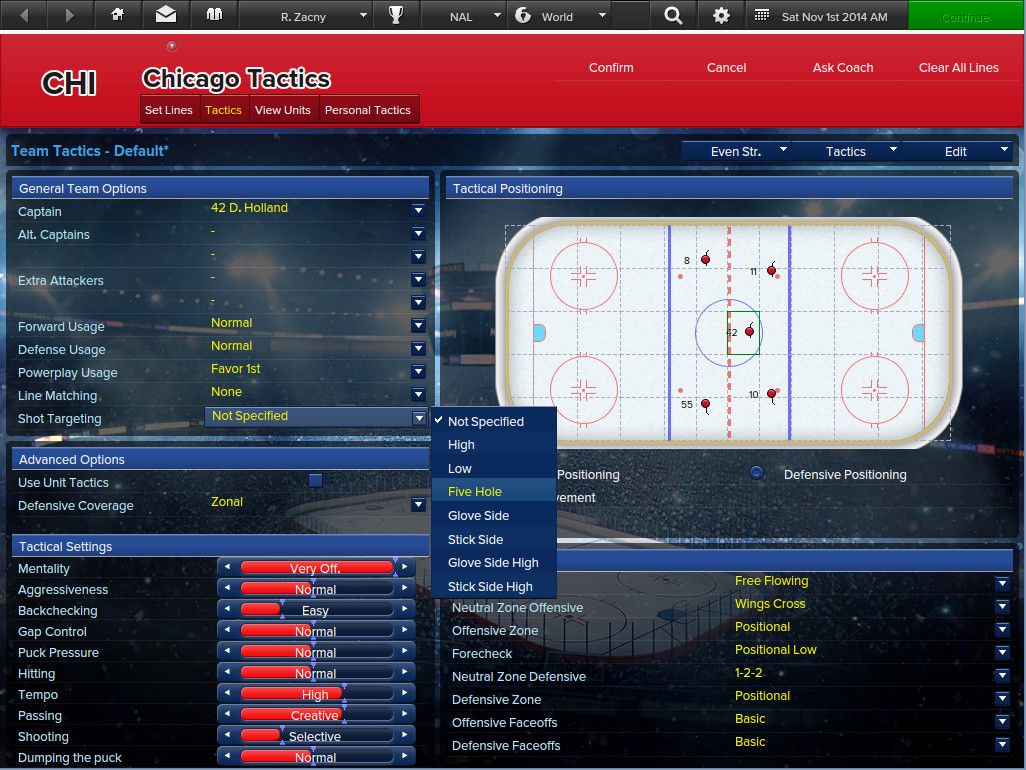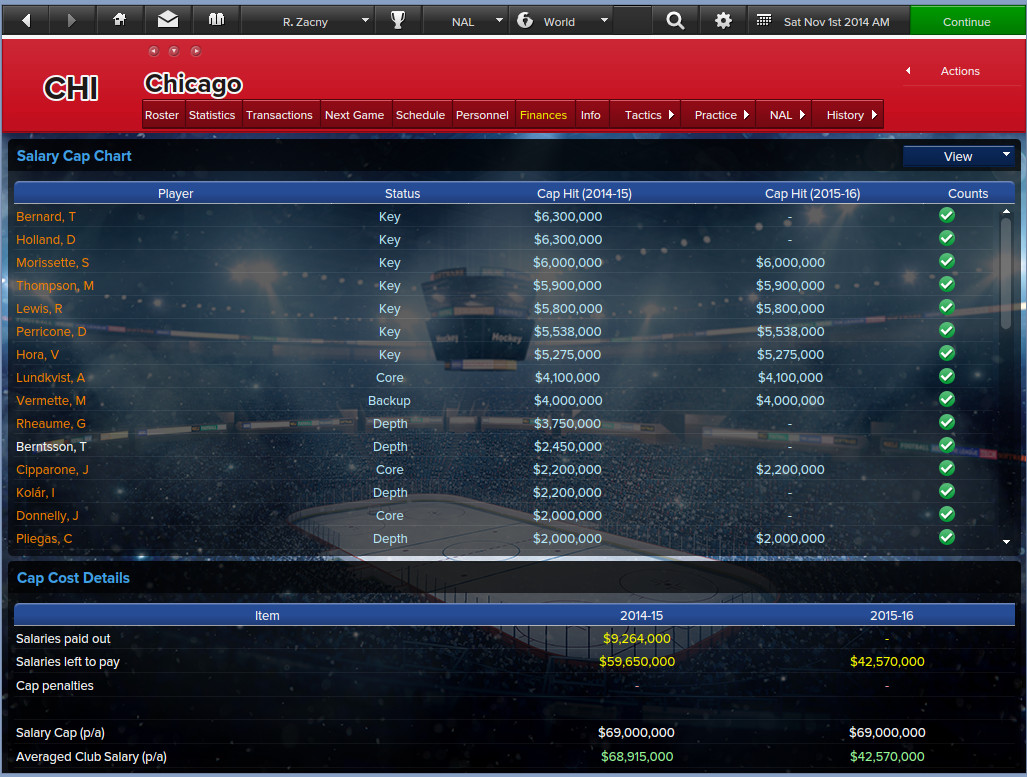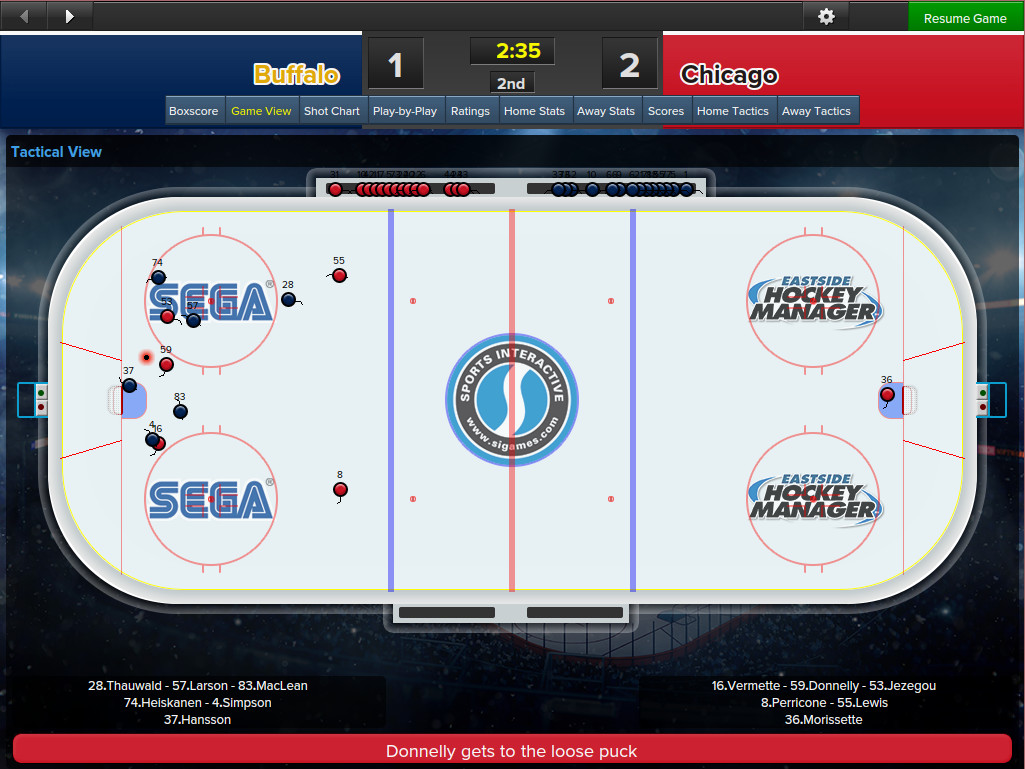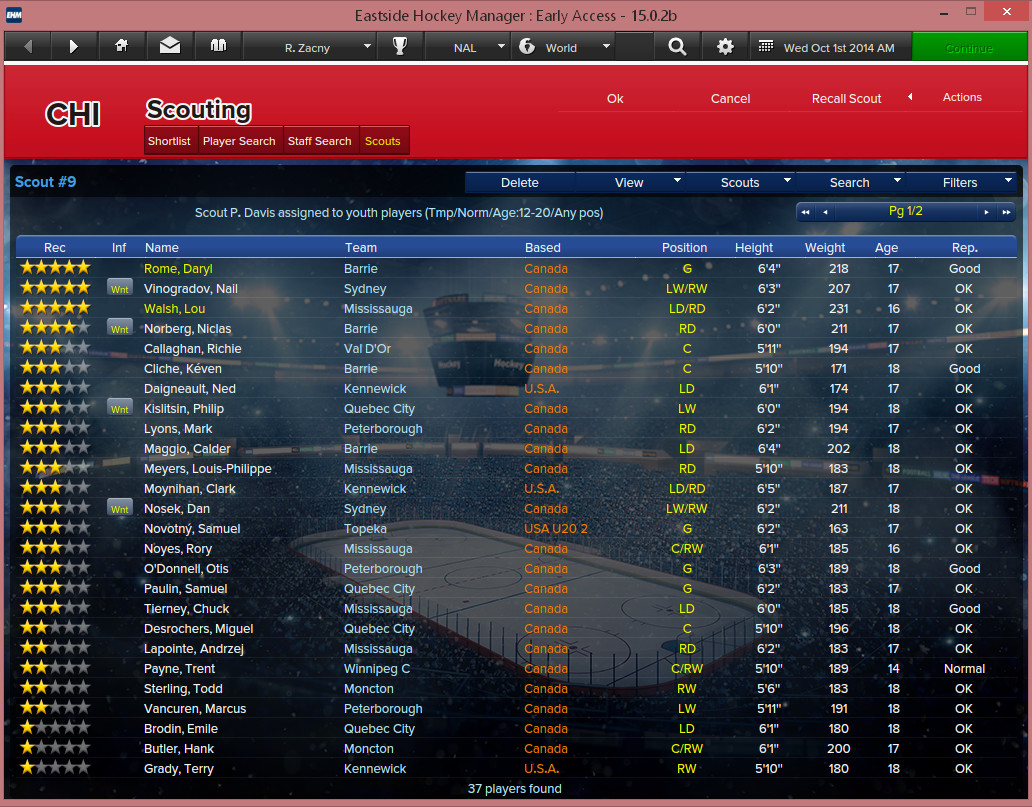
People often ask me, "Rob, how did you go from being a freelance writer to being the general manager of the frontrunning hockey franchise in North America? How did you take your team to the top of the league standings?"
There are a lot of explanations. Savvy talent scouting. Ruthless assessment of the current roster. A close partnership with my coaching staff. But really, if I'm being entirely honest with you, it comes down to this: when I started simulating a new league in Eastside Hockey Manager, I chose Chicago.
This latest edition of Sports Interactive's Eastside Hockey Manager just hit Early Access on Steam after an eight-year hiatus from the PC. It's $15, and while it may not have official licensing from the NHL like the old versions did, the hockey management sim remains a thinly-veiled re-creation of today's pro game. It's more than good enough to let you start living a rich fantasy life in which you are a powerful and in-demand hockey general manager.

MBA required
That's a very particular kind of fantasy, of course. Like any good sports management sim, Eastside Hockey Manager is less about the action between the whistles and more about the workaday business of scouting talent, meeting with staff, writing contracts, and reading news reports from around all levels of sport.
That means that EHM is not an easy game to learn, even if you know hockey. In Eastside Hockey Manager, the games themselves are only a fraction of your overall responsibilities.
Of course, viewing hockey from the front-office perspective instantly deepened my appreciation for the sport. EHM shows the multi-layered strategy game that's taking place across every hockey season, and illustrates in vivid detail just how hard it can be to balance your team's needs in the next month against what you anticipate it will need in the next two years.
That also makes for a steep learning curve. Not only is there a lot of information being thrown at you, but hockey rules and contracts feature a lot of idiosyncrasies. Not only does that make recruitment and salary-cap management tricky, but it means that building a good trade with another franchise practically requires degrees in law, business, and math.
The biggest gaming news, reviews and hardware deals
Keep up to date with the most important stories and the best deals, as picked by the PC Gamer team.

Delegating or micro-managing
Ironically, running a good-to-great team can often be harder in this regard than one that is ‘rebuilding.’ By choosing to manage Chicago, I started my season with a great roster of starters and reserve talent. It should have been a GM's dream, except that I was also millions of dollars over the salary cap, and I had less than a month to bring my team back into compliance with league rules.
The trouble with having a great team, it turns out, is that great players expect to be paid that way. And when I looked over my roster, I wasn't sure who I could spare. Especially since the expectations for my performance were nothing short of a championship title. The second and third-line players I had, many of whom were making millions, were the exact sorts of players you need to thrive across a long, grueling hockey season.
Still, I couldn't have them all. So I went to work trimming salaries via trades, salary renegotiations, and outright firings and contract buyouts. My third and fourth lines were bolstered by some call-ups from my reserve teams in lower-level hockey leagues, while I paid aging and underperforming depth players a lot of money just to go away. By the time the season started, I had retained two lines' worth of star talent, had some upcoming stars and ‘elder skatesmen’ backing them up, and a couple rookie prodigies in my back pocket.
There are a number of tools to help you navigate franchise management. Your head coach is usually on-hand to tell you exactly what the team needs from any trades you're contemplating, and scouts can assess teams and players and give you some insight into what they can offer beyond their stats.
It's the scouts and coaches who can give players an identity beyond their stats. A defenseman might be defined by a huge pile of 1-20 ratings across things like Bravery, Agility, Checking, and Influence. That might give you a gut-feeling about what a player will do on the ice, but assigning a scout gives you actionable info like, "This guy is a second-line player, but he's young and still has potential to develop into a franchise player." And just like that, you know what this player represents.

There are only so many scouts to go around, however, and they're not all equal judges of talent (at least according to their stats). I haven't figured out yet whether some of my scouts are feeding me bad assessments, though I suspect I'll find that out once some of my young prospects start maturing. But the trouble a GM faces is that out of a scouting staff of about a dozen people, you have to have scouts assessing your own players, upcoming opposition, foreign leagues, youth leagues, and then the all-important shortlist, which is like Pinterest for hockey GMs. Before my season even began, I had a dozen players across several positions that I was keeping my eye on, and three scouts combing through the list to figure out what they were really about.
Once you have your roster, however, the work is far from over. EHM is truly a management sim where "you determine your own level of involvement". You can be a front-office manager, putting in the hard work in the summer and early fall, then going on vacation while the team you built runs itself for most of the regular season, or you can be GM, head scout, head coach, assistant coach, and analyst all at once. You can fine-tune how your team plays, or even how specific sets of players will play against a specific team under certain conditions.
The games themselves are simulated in granular detail, and you can watch them in real-time. The graphics aren't fancy at all, of course. Games look like diagrams come to life as little circles in team colors whirl and dance around a top-down picture of the ice. But I still find them pretty gripping at times, especially as I start getting invested in how my prospects are panning out, or whether my gameplans prove to be any good.

Nice office, lousy view
The biggest problem I have with Eastside is that it doesn't really have a nice management flow. The virtual office is too haphazard, and there are too many important screens hidden behind layers of dropdowns. Couple that with a browser-like interface where you can only look at one thing at a time, and a tiny, resolution-locked window, and EHM becomes unpleasantly click-heavy. The decision you're trying to make, the means to evaluate it, and the context you need to inform it are often in different places, which makes an already daunting management sim even harder.
When I was trying to get a deal done with Edmonton for the rights to a brilliant young forward, I had to keep hopping back and forth between reports on individual players, then back to to the trade screen to check the financial impact of a proposed trade, and then back to the teams respective players' lists to see who else could be used to balance out the deal. Something that could have taken five minutes if I'd had a few different windows to play with turned into 20 minutes of running between the same four or five displays. And then I still couldn't close the deal because Edmonton were apparently convinced they had the next Sidney Crosby and wanted all my draft picks and my top-scoring center.
These problems are far from deal-breakers if you're into the strategy of sports management. Obviously, EHM is a game for true aficionados more than casual fans, but I've been surprised at how much running the make-believe Blackhawks has resonated with me. While I hope the presentation and interface will improve with time, I think there's already enough here to become an off-season obsession of hockey fans.

